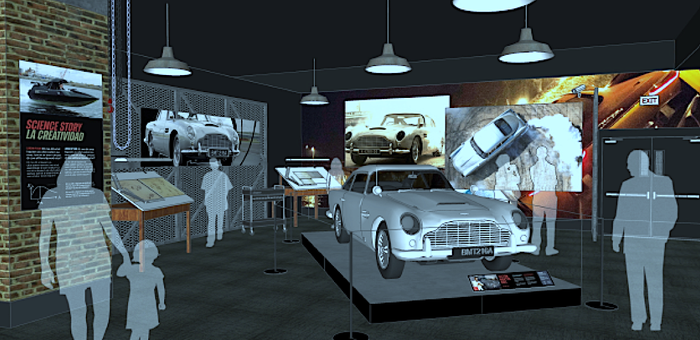007 Science: Inventing the World of James Bond
To build incredible James Bond gadgets like jet packs, someone must first imagine them.

The Gravity Industry Jet Suit took inspiration from James Bond's jet pack in "Thunderball."Gravity Industries
At a Glance
- See Bond's jet pack from "Thunderball"
- More than a dozen of Bond's cars.
- Show runs through October
The James Bond films have something for most movie-goers. Some like the action. Some go to see the exotic locales or the cool cars (which are showcased in a new exhibit at the International Spy Museum), while others hope to see the spy’s love interests. But many of us want to see the amazing technology provided to Agent 007 of His Majesty’s (there’s a King now) Secret Service.
Chicago’s Museum of Science and Industry knows that we love Bond’s gadgets, so they’ve opened a new exhibit highlighting the various items provided to the spy by MI6’s Q division, in “007 Science: Inventing the World of James Bond.” The exhibit aims to explore how physics, chemistry, engineering, and mathematics have shaped James Bond's on-screen adventures. The movies are practically STEM education recruiting films!
Watching the movies, fans are motivated to wonder whether some of the gadgets are possible, and if so, how they could be made to work. This is similar to the well-documented life-imitating-art theme of various devices whose creation was motivated by the Star Trek television show and movie franchise. But by taking place in the present, rather than the future, the Bond films present technologies that are more potentially attainable than faster-than-light space travel.
"The James Bond universe lies at the intersection of science fiction and science fact," said Chevy Humphrey, President and CEO at the Museum of Science and Industry. "We are thrilled to partner with EON Productions to bring this groundbreaking new exhibit to life to tell the unique story of how science and technology is woven into popular fiction, which can often be a launching pad for imagining what's possible."
The Gravity Industries Jet Suit is a prime example. Sean Connery’s Bond flew a prototype jetpack in 1965’s Thunderball, and while that suit was considered too dangerous for operational use, Gravity Industries is showing its Jet Suit used in realistic scenarios by special forces soldiers. The suction cup climbers used in You Only Live Twice that surely inspired Stanford University’s real-world ‘gecko gloves’ that allow people to climb walls are also displayed.
007 Science includes 13 vehicles and more than 90 additional artifacts, like the lipstick and earpieces that allowed for secret communication in No Time To Die, the MI6 retina scanner that unlocked the MI6 communications room in GoldenEye, the Parahawk snowmobile hybrid from The World Is Not Enough, and the safe-cracking device from On Her Majesty's Secret Service.

A rendering of the automotive portion of the 007 Science exhibit. MUSEUM OF SCIENCE AND INDUSTRY
The exhibit features a lab space that images where the Q division works while creating the secret field technologies shown in the Bond movies. It also has the same interactive touch-screen activity that we experienced at The Spy Museum that lets visitors test their skills developing the perfect James Bond vehicle for spy activities and designing stunts for the films.
“007 Science invites the public to discover the real-world science in front of and behind the camera,” said Gregg Wilson, Associate Producer of the James Bond film series.
The exhibit runs through late October, and the timed-entry tickets are $18 for adults, $14 for children, and $9 for museum members. For more information about the exhibit, visit msichicago.org/007science.
About the Author(s)
You May Also Like





